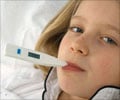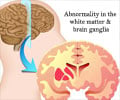“People still don't know much about epilepsy. A lot of stigma is attached to it, especially when it involves children. But I've always tried to put children at ease, because their parents have told them that it was the same with Jonty.”
These are noble and brave words from one of the most famous epileptics in sporting history- Jonty Rhodes. Also known as the ‘Flying Machine’ for his unchallenged fielding prowess, South African cricketer Rhodes who suffered epilepsy as a kid, has always lent his celebrity status in support of the cause of epilepsy.This year, World Epilepsy Week will be observed during June 17 to June 23, in many nations, with Epilepsy Day falling on 21 June.
Epilepsy, a brain disorder with many possible causes, is characterized by a series of seizures, which can catch the sufferer unaware at any moment. In epilepsy, also known as falling sickness, the normal pattern of neuronal activity (of the nerve cells in the brain) becomes disturbed. This causes strange sensations, emotions, and behavior or sometimes convulsions, muscle spasms, and loss of consciousness. In ancient times, epileptic fits marked by violent spasms and foaming at the mouth, were considered manifestations of the evil spirits possessed by the sufferer.
Incidence: Globally, 40 to 50 million people have epilepsy, including nearly 3 million in the United States. Nearly three-quarters of the affected - mostly those with epilepsy in non-industrialized nations - receive no treatment whatsoever for their seizures. Throughout the world, misunderstanding, fear and ill-informed public attitudes toward this common medical condition contribute to widespread discrimination, isolation and social rejection of people with epilepsy.
Treatment: According to health specialists, it is always advisable to begin treatment for epilepsy as soon as it is diagnosed. For about 80 percent of those diagnosed with epilepsy, seizures can be controlled with modern medicines and surgical techniques. Common diagnostic tests for epilepsy include EEGs and brain scans.
The Social Stigma: While epilepsy cannot be cured, at least as of now, for some people it does eventually go away. Incidentally, most people with epilepsy lead outwardly normal lives. At the same time, it is not uncommon for people with epilepsy, especially children, to develop behavioral and emotional problems- sometimes the consequence of embarrassment and frustration or bullying, teasing, or avoidance in school and other social setting.
Famous personalities who suffered from epilepsy include painter Vincent van Gogh, Socrates, Alexander the Great, Lord Byron, Agatha Christie, Julius Caesar, Napoleon Bonaparte, Dante, Sir Walter Scott, Jonathan Swift, Lord Byron, Shelley, Alfred Lord Tennyson, Joan of Arc, Peter Tchaikovsky, Ludwig van Beethoven and Richard Burton to name a few. For those who stigmatize epileptics, this should be a note-worthy point.
''All at once, out of the intensity of the consciousness of individuality, the individuality itself seemed to dissolve and fade away into boundless being; and this not a confused state, but the clearest of the clearest, the surest of the surest, the weirdest of the weirdest, utterly beyond words.''
The connection between seizures and the genius trait is more than a mere coincidence. Some have felt that epilepsy may be connected to having an unusual giftedness. Some scientists have however discredited this ''epilepsy and genius'' connection. Dr. Jerome Engel, Professor of Neurology at the University of California School of Medicine and author of the book Seizures and Epilepsy says:
''There is no evidence... that either epileptic seizures or a predisposition to epilepsy is capable of engendering exceptional talents. Rather, the occasional concurrence of epilepsy and genius most likely reflects the probability that a common disorder will at times afflict people with uncommon potential.''
However certain types of epilepsy especially when it involved the temporal lobe of the brain maybe connected to creative work such as composing, painting or writing. The temporal lobe seizures may also fire neurons that help with this creativeness. Science so far has really not been able to prove or disapprove anything Neuropsychologist Dr. Paul Spiers says:
''Sometimes the same things that cause epilepsy result in giftedness. If you damage an area [of the brain] early enough in life, the corresponding area on the other side has a chance to overdevelop.''
According to Dr. Bear:’A temporal lobe focus in the superior individual may spark an extraordinary search for that entity we alternately call truth or beauty.’
WHO on Epilepsy: The World Health Organization reports that, ''In terms of productive life-years lost to disability and premature death, the burden of epilepsy ranks with depression and other affective disorders, Alzheimer's disease and other dementias, and substance abuse; among all medical conditions, it ranks with breast cancer in women and lung cancer in men.''
Research on Epilepsy: Currently, scientists are studying potential anti-epileptic drugs with the goal of enhancing treatment for epilepsy. Doctors are also now experimenting with several new types of therapies for epilepsy, including transplanting fetal pig neurons into the brains of patients- to learn whether cell transplants can help control seizures, transplanting stem cells, and using a device that could predict seizures up to 3 minutes before they begin. In addition, researchers are continually improving MRI and other brain scans.
People with epilepsy often report impairments in their memory, language, attention, concentration and information processing as a result of their epilepsy and its treatment. It is unclear whether problems with these abilities are due to the structure of the epileptic brain, the effect of continuing to have seizures or the side effects of anti-epileptic medication.
Ketogenic diet for Epilepsy Prevention: Studies have shown that sometimes, children may experience fewer seizures if they maintain a strict diet - called the ketogenic diet - rich in fats and low in carbohydrates. Other forms of treatment include a kind of epilepsy “pacemaker” implanted in the chest to sends signals to help the brain regulate its electrical signals. For some, though, their seizures are resistant to everything else but brain surgery.
Support Groups for Epilepsy: There are innumerable organizations and support groups around the world that are concerned with epilepsy and the cause of epileptics. These include the International League Against Epilepsy (ILAE), the International Bureau for Epilepsy (IBE), the British Epilepsy Association (BEA), World Health Organization (WHO), India Epilepsy Association, Epilepsy South Africa, etc.
The IBE addresses such social problems as education, employment, insurance, driving license restrictions and public awareness and also works in close liaison with the International League Against Epilepsy (ILAE), an organization of medical professionals involved in the medical and scientific issues of epilepsy.
Global campaigns against epilepsy, such as the ‘Out of the Shadows’ movement, spearheaded by celebrities like Amy Lee, Grammy-winning singer, exist. According to Lee, negative stereotypes like: People with epilepsy are broken; People with epilepsy can't hold jobs; or People with epilepsy are dangerous to themselves and others, need to be broken.
Epilepsy Awareness Week: Every year, during Epilepsy Week, various activities like camps, walks, plays, fundraisers, seminars, etc. are carried out to create awareness on epilepsy and help remove at least some of the stigma of the disorder.
In India, according to neurologist Dr. K.A Salam, five to six out of 1,000 persons suffer from some form of epilepsy. The majority of patients are young and the disorder afflicts them during the most impressionable period of their lives. However, the scientific community has made tremendous strides in diagnosing, understanding and treating epilepsy from the latter half of the 20th century, according to him.
''About 80 per cent of those with epilepsy can be cured or their symptoms well controlled to a socially acceptable degree. Newer methods of treatment and surgery can now be offered to the remaining 20 per cent'', says Salam. He adds that proper diagnosis is the key to success in epilepsy treatment.
Video Programs Related to Epilepsy and Seizures:
Taking Control of Seizures: A Personal Look
Treatment Options for Children with Epilepsy
Seizure Control: What Can You Take for Epilepsy?
Treating Epilepsy: From Drug Therapy to Surgery
Portrait of a Child with Epilepsy
Witnessing a Seizure: What Should You Do?
When the Brain Misfires: Understanding Epilepsy
Source-Medindia











